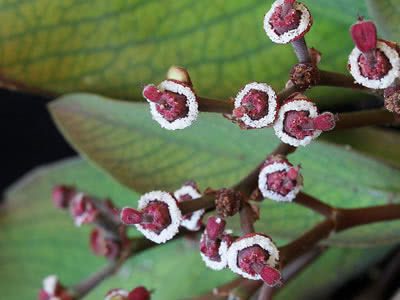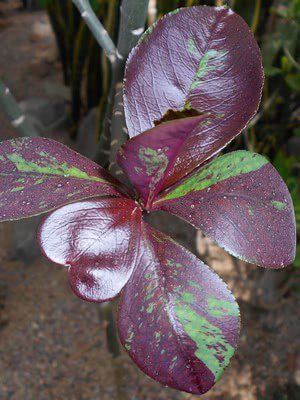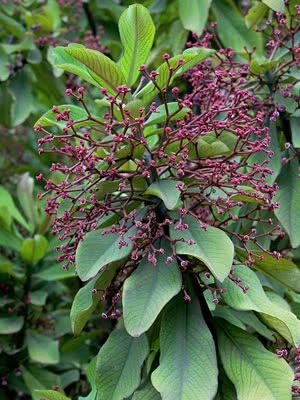The African milk bush is a shrubby and perennial species commonly used for creating hedges, capable of reaching heights of up to 33 feet. It earns its name from the white latex it exudes when cut. Also known as “janaúba,” it is native to West Africa. It features a cylindrical stem, with its older branches adopting a greyish hue. The leaves are spatulate to elliptical, slightly serrated, and fleshy, arranged spirally. They are a vibrant green, sometimes with small purple spots or covering the entire leaf, depending on the variety. The flowers are quite small, emerging in branched inflorescences with a brown coloration, though they hold little ornamental appeal.

This latex-producing shrub boasts attractive foliage and holds considerable medicinal value, often utilized as an anti-inflammatory and analgesic. However, it should not be used without medical guidance, as it contains toxic substances that can be harmful if mishandled or consumed inappropriately. It can be planted in pots or directly in the garden, forming hedges with a unique and vibrant color. Additionally, it’s an adaptable species with medium-sized leaves that sport a vivid green or purple color, adding contrasting elements to the garden. The African milk bush requires minimal maintenance due to its hardy nature and slow growth. Maintenance involves periodic fertilization and the pruning of branches. Its cultivation is highly recommended for tropical or subtropical gardens.

It thrives in full sun or partial shade, with infrequent watering (only when the soil is dry), as it’s a plant with low water requirements. Being native to arid climates, it adapts well to poor soils and is drought-tolerant. In other words, it prefers sandy and well-draining soils, ideally enriched with organic matter. It can be grown outdoors, provided it’s protected from frost, or indoors in well-lit spaces. When cultivating in pots, ensure proper drainage. During winter, leaf shedding is common, so reduce fertilization and watering during this period of stress. Replanting and fertilization should ideally occur exclusively in spring/summer. Propagation is typically done through cuttings or seeding in the spring. When making cuttings, take precautions against latex to prevent intoxication or allergies, and let the cuttings air-dry in the shade for 24 hours before planting.

